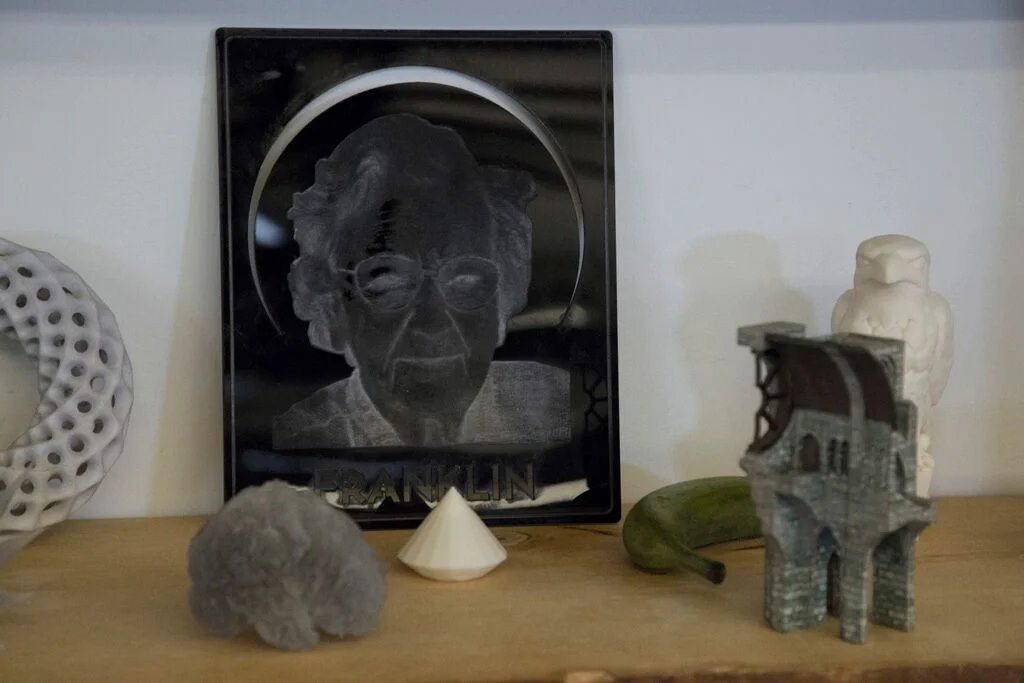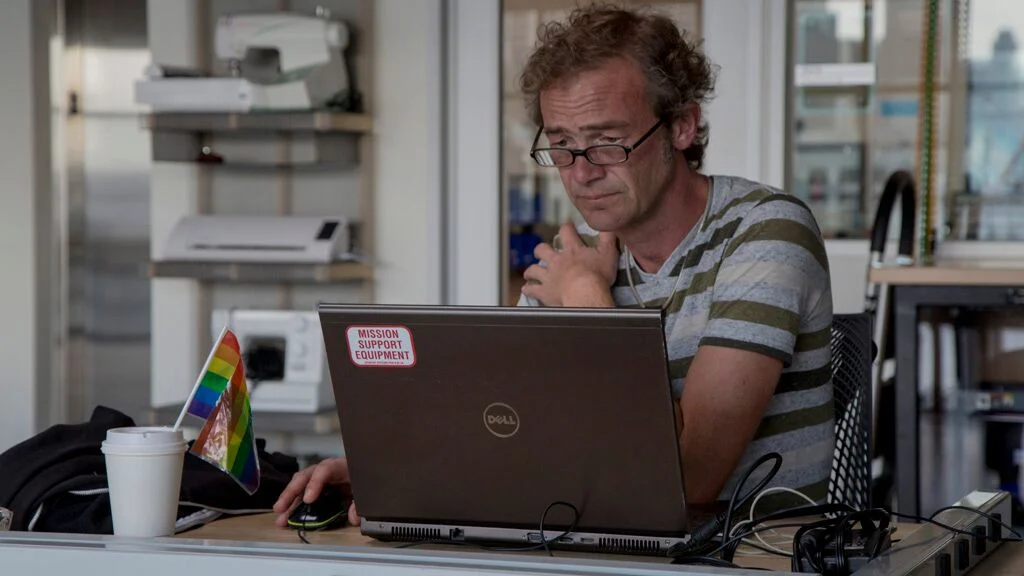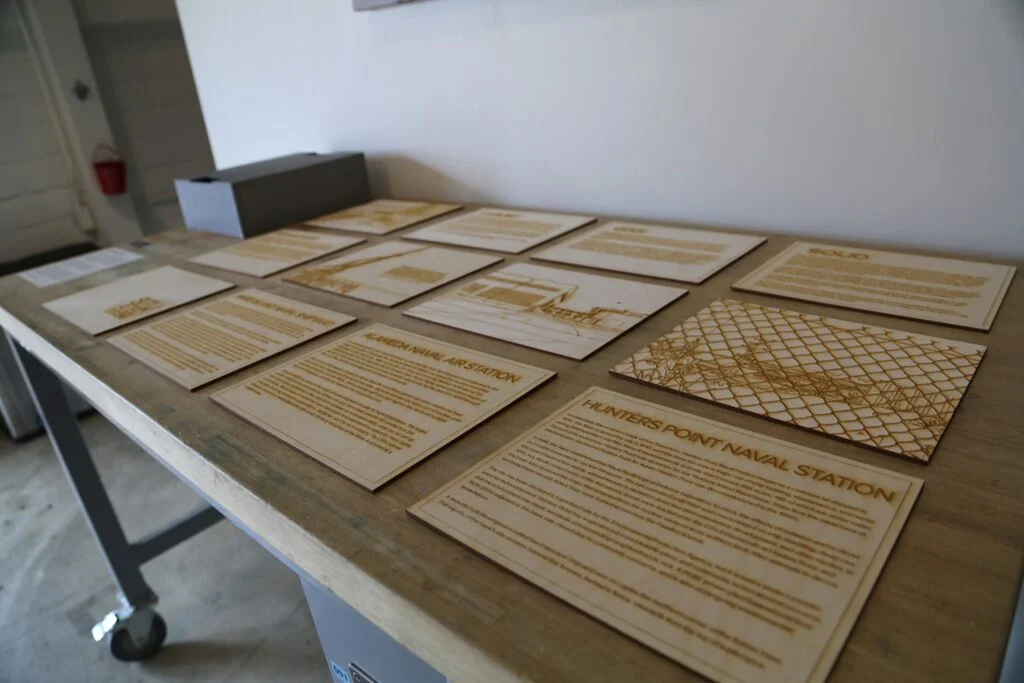San Francisco has its military history written across its bones. Its motto Gold In Peace, Iron in War sites the materials of warfare within civic prosperity. Situated Systems explored this industrial and military history, and its role in shaping the region’s contemporary technology industries’ culture and practices. Located in Donna Haraway’s notion of situated knowledges, this work interrogated land use, environmental impact, and re-appropriated use of heavy machinery in military innovation.
Situated Systems was created through the inaugeral residency at Experimental Research Lab at Autodesk’s Pier 9, San Francisco; and was a collaboration between Georgina Voss, Ingrid Burrington, Deb Chachra, and Sherri Wasserman.
Drawing and reflecting on the practices and affordances of digital fabrication and additive manufacturing, we created a complex collection of sculptures, objects, publications, tools, and installations as artworks, exhibitions, journalism, and learning resources. These included:
Mare Island Extension Kit: Models of heavy industrial machinery original used in military shipyards, now repurposed for civilian use; and their new operators. Captured through photogrammetry and created with additive manufacturing.
Experimental Zine: This zine, created from laser-cut and etched plywood and stored in a welded steel box, examines the lingering consequences of land, water, and communities of decommissioned military sites. The materials and practices used to create the zine reflect those found in these sites, and in early shipbuilding.
Annotated Map: Documentation of the project’s fieldwork sites – military related, federal Superfund sites, and others.
Icons:Icons of Donna Haraway, Ursula Franklin, and Lucy Lippard, designed and fabricated as a learning exercise. The materiality of objects means that learning about fabrication cannot be done in the abstract – the only way to learn to make objects is to make objects.
Speculative Exhibition: An exhibition of the project, developed in consultation with the Pier 9 community, which was conceived and documented through speculative (rather than physical) approaches to allow us to have the greatest imaginative flexibility.
Situated Knowledges: A zine series collecting interviews with members of the Pier 9 community about their art practices and relationship to tools and machines; and with Rick and Megan Prelinger. Zines embody the promise not yet fulfilled by digital fabrication of low-cost replication.
Stickers:Stickers modelled after the Mission Support Equipment labels found on ex-military machinery from Mare Island Naval Shipyard.
The work is documented here, with further detail about the collection, its documentation, and our approach.


























































